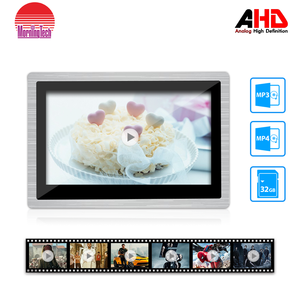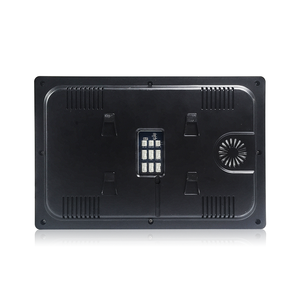(19431 products available)





































































































































































































The type of intercom system that can be integrated with existing infrastructure is called a supportable intercom. Supportable intercoms can be grouped into different categories based on their communication technology. The categories include the following;
The right intercom must provide the support that users need. Here are some essential functionalities and features that a reliable intercom system should have.
Two-way Communication
In most cases, one would need to speak and listen. So, a reliable intercom system will provide a two-way conveyance for both the user and the other party. This feature will give the user full control over the conservation flow.
Multiple Stations
Some intercoms have only two main units. However, Supportable intercoms can have multiple stations. This feature makes it possible to connect and communicate with different support personnel from a single central unit. The multiple stations will reduce response time and greatly enhance efficiency.
Multi-channel Access
The multi-channel access feature allows simultaneous communication between different support staff. This feature will ensure that different support personnel operate on different communication channels. So, there will be less waiting time when transferring calls to the relevant support staff.
Push-to-Talk Button
A ''Press and Release'' button operates like a walkie-talkie. When the button is pressed, the user can talk. But when the button is released, the user can only listen. This feature conserves bandwidth and makes conversations more efficient.
Hands-free Operation
Some intercoms will allow operators to talk and listen without using the handset. This facility will enables operators to attend to other tasks while responding to inquiries. Also, this feature enhances the multitasking ability of support staff.
lntema/External Device Integration
Supportable intercoms can integrate with other communication support devices. This integration can be with a Customer Relationship Management (CRM) system. The integration enables the support staff to access caller information quickly. This can help the operator respond more efficiently.
Voice Recording
Some intercom systems have a voice recording feature. This feature will enable managers to monitor and evaluate operator-customer interactions. The monitoring and evaluation can improve response efficiency and staff training.
Noise Cancellation
Intercoms with this feature remove background noise from the operator's end. This filter improves speech clarity and enhances communication, especially in a noisy environment.
Durable Battery
The battery life will allow long hours of operation. With minimal recharges, support staff will be able to attend to customers without losing continuity.
Supported intercom systems can be used in various applications, including:
Residential Facilities
Supportable intercoms provide enhanced communication between family members within a household and can be installed in door stations to enable visitors to communicate without entering the property.
Commercial Facilities
Businesses, offices, and industrial settings often use intercoms to connect between different departments. Supportable intercoms can also be integrated with access control systems to restrict access to authorized personnel only.
Hotels And Hospitality Facilities
Hotels and hospitality facilities can use intercom systems with support to provide guests with services such as room service, concierge services, and facility access. This allows for efficient communication and enhances the overall guest experience.
Healthcare Facilities
Patients can use healthcare facilities communication intercom support to contact healthcare providers, enhancing the overall healthcare communication experience.
Educational Institutions
Supportable intercoms can be used in administrative offices, classrooms, and common areas of educational institutions to facilitate communication between staff and students.
Manufacturing Facilities
Manufacturers can use intercoms with support to communicate between different production lines and also to relay messages regarding the movement of goods.
Government Facilities
Government establishments can use distributed intercom systems to facilitate communication among agencies, security personnel, and visitors within the premises.
Community Living Facilities
Residents in community living facilities can use an intercom with support to communicate between staff members and residents or among residents themselves.
Emergency Services
First responders and emergency service providers can use intercoms with support to coordinate during emergency response situations.
Before purchasing the intercom system, it is crucial to know which kind of system will connect with the supported devices for users' operations. Here are several tips on how to choose a suitable intercom system.
When selecting a suitable intercom that supports a particular device, consider the following;
Q: How to install the supportable intercom systems?
A: Installers usually mount the outdoor unit at eye level. Then, connect it to the indoor unit using the installation cable. The cable links to power supplies, telephones, and other devices. After wiring, mount the indoor unit on the wall and test the system.
Q: What is the difference between traditional and supportable intercom systems?
A: Traditional intercoms used wired connections to communicate between rooms. They communicated through audio and sometimes integrated video later. Supportable intercoms use modern technology like IP-based systems to enhance communication. They provide clearer audio, better recorded support and efficient user interfaces.
Q: What is the maintenance routine for supportable intercoms?
A: Supportable intercoms need regular checking to provide optimal performance. Users need to check the battery, clean the device, check the connections and low temperatures. A supportable intercom manufacturer will provide detailed maintenance instructions.
Q: What are the benefits of supportable intercoms?
A: Intercoms are important communication tools for homes and businesses. Intercoms facilitate instant communication. Users don't have to move from one spot to another. These systems provide convenience. They bring users easy access to important information. Intercoms enhance security by providing safe access to buildings.
Q: What are the benefits of wired over wireless supportable intercoms?
A: Wireless intercoms offer flexibility during installation. They allow businesses and homeowners to communicate and add supportable intercoms easily. Wireless intercoms also provide reliable communication between rooms.